If you want to learn how to read body language from an FBI expert, then “What Every BODY Is Saying” by Joe Navarro is a must-read. This book dives into the fascinating secret world of understanding nonverbal communication, offering practical insights and techniques from Navarro’s 25 years of experience.
Whether you’re looking to improve your communication skills, show more confidence, or detect when someone is lying, this book provides the tools you need. In the following summary, we’ll cover the key takeaways from each chapter, so you can grasp the essential strategies and start applying them in your daily life.
📖 1. Summary by Chapter: Every chapter of “What Every BODY Is Saying” explained in 5 minutes
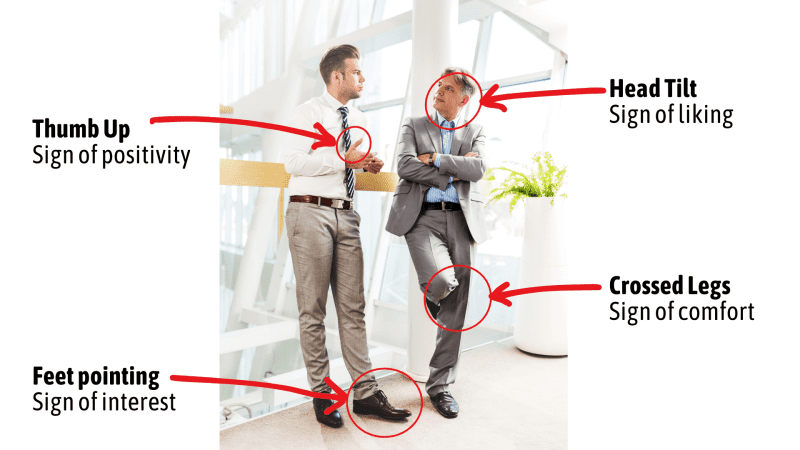
First, you’ll get a quick overview of the key concepts and lessons you should know from each chapter of the book.
Chapter 1 Summary
- In Chapter 1, Joe Navarro explains how he had to learn nonverbal communication quickly when he came to America from Cuba at age 8—he learned it out of necessity to identify friendly and unfriendly behaviors in a strange new place.
- Nonverbal communication is conveying information to other people using your facial expressions, gestures, touch, posture, clothing, and voice. It makes up about 65% of our communication and is often more honest than words.
- The Ten Commandments of understanding body language are: 1) observe carefully, 2) understand behaviors in context, 3) recognize behaviors that are universal, 4) identify a person’s unique tells, 5) establish their baseline behaviors, 6) look for clusters of cues, 7) notice sudden changes, 8) recognize false cues, 9) distinguish signs of comfort and discomfort, and 10) be subtle when observing.
Chapter 2 Summary
- This chapter explains the Three Brain Model: we all have an inner reptilian, mammalian, and human brains. The limbic brain (mammalian) reacts instantly and automatically, making nonverbal reactions hard to hide.
- Freeze, Flight, Fight are our main limbic responses to threats or stressors. We freeze, try to block out the stress (such as by closing our eyes), or become aggressive by arguing.
- Comfort/discomfort are THE key to understanding body language. When stressed, we exhibit pacifying behaviors like touching our neck or face to calm down. You can learn a lot by paying attention to this, look especially for sudden changes from comfort to discomfort.
Chapter 3 Summary
- Feet are more honest than faces: We can control facial expressions but usually neglect to notice what our feet are communicating. When Joe Navarro was interviewing someone for the FBI, their feet were the first place he looked, even making sure tables were moved aside so feet could not be hidden.
- Foot movement and position reveal our emotions: our feet wiggle when we’re happy, our feet point towards what we like and away from what we dislike, we spread legs as a territorial sign of confidence (or stress), we cross our legs when comfortable or during courtship.
Chapter 4 Summary
- Our torso position also reveals our emotions and comfort level. Torso lean: we lean in towards people and things we like. And we lean away or turn our body to the side when we dislike something or someone.
- Torso shield: we use our arms to protect our torso when we feel threatened or challenged. (Although some people simply cross their arms out of comfort.) Some people splay out their torso when they feel comfortable or confident.
- The Turtle Effect: our shoulders rise up towards our ears when we feel insecure or negative—imagine a losing team walking off the sports field.
Chapter 5 Summary
- Our arms signal our current mood and social status.
- Arm movement: Free-flowing arm movements show we’re feeling good, while restricted arms suggest discomfort or trying to be unnoticed (like a shoplifter or abused child).
- Arm position: Many people take up more space with their arms as a territorial display, to establish a position of power, like a man draping his arm over a chair in a business meeting. Another position used by police officers and other authority figures to assert dominance is “arms akimbo,” with hands on their hips, thumbs facing backwards.
Chapter 6 Summary
- Our hands and fingers are powerful communicators and command a disproportionate amount of attention. Effective speakers use hand gestures to emphasize their points. When someone’s hands are hidden under a table, it often feels like they’re hiding something from us.
- High-confidence hand gestures: Steepled hands (fingertips spread and touching) communicate high certainty, while thumbs showing from pockets suggest high status and positivity.
- Low-confidence hand gestures: Hand movements that are frozen or constricted, hand-wringing or rubbing, thumbs hidden in pockets—these all indicate stress or weakness. Also nail biting, sweaty palms, and hands shaking tend to indicate strong anxiety.
Chapter 7 Summary
- Our faces are able to communicate micro-expressions, more subtle feelings than other parts of the body. But people also have the most practice lying with their facial expressions, which makes reading faces more difficult.
- Muscle tension is the main thing to look for—when we feel negative emotions like discomfort or fear, then our muscles tighten (e.g. jaw clenching, eyes squinting, furrowed brow). When we feel positive, then our facial muscles relax. When we’re most comfortable, we tilt our head to one side.
- Eye behaviors: Pupil enlargement indicates momentary surprise or that we like what we see. We block our eyes when we don’t like something, like someone might close their eyes for a few seconds when hearing bad news. Eye blinking rate increases when we’re troubled or aroused.
Chapter 8 Summary
- This chapter focuses on detecting deception. It is mainly a recap of ideas the book covered in previous chapters, with a focus on identifying when someone is lying. The main thing to look for is limbic arousal, an increased emotional response triggered when someone is feeling discomfort because of a specific question or topic.
- First, you must establish a comfortable environment where the person feels relaxed, so you can gauge their baseline behavior. Then you ask questions and pay attention for reactions that signal discomfort, especially pacifying behaviors that people do to soothe stress like touching their face and neck.
Chapter 9 Summary
- In the final chapter, Joe tells a story that is really a clever analogy. His friend was driving in an unfamiliar city in Florida, and he was lost because he didn’t see any street signs. Then he stopped to ask for directions from a local, and they pointed out the street signs were just a few inches from the ground in that city! From then on, his friend could navigate effortlessly. This is just like learning body language, when we know the nonverbal signs to look for, we can navigate social interactions with much greater effectiveness.
A fantastic book on negotiation is Never Split the Difference by Chris Voss, who was with the FBI for 24 years and became their lead hostage negotiator. He says that when we negotiate, “The goal is to identify what your counterparts actually need (monetarily, emotionally, or otherwise) and get them feeling safe enough to talk and talk and talk some more about what they want.”
According to Joe Navarro, understanding nonverbal behavior should focus on which two key areas?
Happiness and sadness
Openness and closed-mindedness
Comfort and discomfort
Confidence and insecurity
Now, let’s move on to a deep dive into the best practical ideas and key takeaways in this book…
😰 2. Comfort vs. Discomfort: To understand what someone’s body language means, ask yourself if they seem at ease or stressed
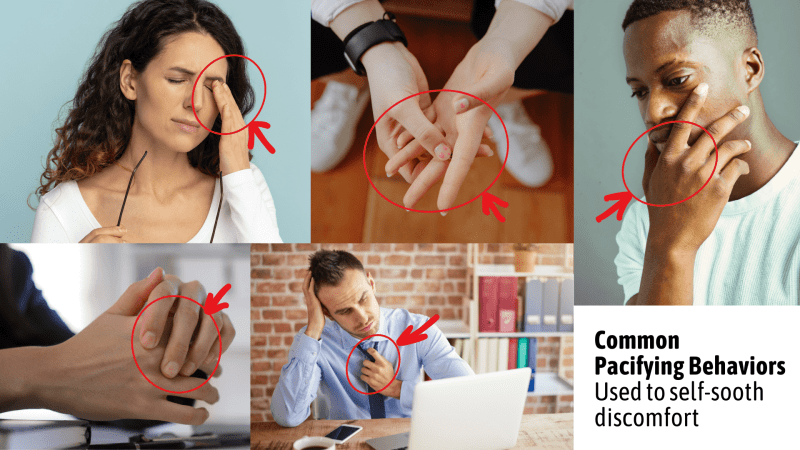
Body language signals generally fall into two categories: comfort and discomfort. Signs of discomfort often include leaning away, facial tension, and are usually followed by pacifying behaviors like touching the face or neck. Recognizing these signs can help you better understand a person’s true feelings and reactions.
When you’re trying to decode someone’s body language, the most important thing is to determine whether they are displaying signs of comfort or discomfort. This basic distinction will give you significant clues about a person’s emotional state.
- Comfort signals, like relaxed posture and open gestures, suggest the person feels at ease.
- On the other hand, discomfort signals, such as leaning away or facial tension, indicate stress or unease.
One important aspect to look out for is pacifying behaviors. These are actions people use to self-soothe and remain calm when they are stressed. The most common pacifying behaviors involve touching the face and neck. For instance, a person might rub their neck or touch their face when they feel uneasy.
A notable example from Joe Navarro’s experience as an FBI agent illustrates this well. While searching for a wanted suspect, Navarro questioned the suspect’s mother. Although she denied knowing her son’s whereabouts, she repeatedly touched her suprasternal notch – the small dip at the base of the throat – a clear sign of discomfort. This behavior hinted at her unease, leading to the suspect’s discovery in a closet.
Detecting deception is particularly challenging because the signs of lying are often identical to signs of stress. Traditional body language books might suggest that touching the nose indicates lying, but this can also be a general response to discomfort.
When trying to learn the honest truth from someone, Navarro recommends establishing a baseline of comfort first. By getting someone to relax, you can better identify changes in their body language when specific questions or topics are introduced. If a person exhibits discomfort and pacifying behaviors in response to particular questions, it doesn’t automatically mean they are lying, but it does indicate that the topic might be worth exploring further. Understanding these nuances helps in accurately interpreting body language and distinguishing between mere stress and potential deceit.
The concept of observing comfort vs. discomfort in body language connects well with Law 48 from “The 48 Laws of Power”: Be Like Water. By understanding and adapting to others’ nonverbal signals, you can stay flexible and unpredictable in your interactions. Recognizing when someone is stressed or at ease allows you to adjust your behavior and strategy dynamically, maintaining influence and control in various situations. This adaptability helps you flow with the circumstances and respond effectively to the subtle cues around you.
For example, when Navarro is consulting for a major organization to help them negotiate a deal, he will ask the other side to read the contract line by line, while secretly looking for signs of tension or dislike, such as their eyes squinting at a certain clause. This tells him which parts of the contract need further discussion or clarification.
Which of the following is a common sign of discomfort?
Leaning forward
Facial tension
Maintaining eye contact
Upright posture
🧠 3. Freeze, Flight, Fight: The three automatic reactions of our limbic brain to sources of discomfort, stress, or threat

The limbic brain controls our automatic reactions, which are hard to conceal. These reactions are categorized into three types: freeze, flight, and fight. Initially, we freeze when we feel threatened, followed by the urge to escape (flight), and finally, we may engage in nonphysical forms of confrontation (fight).
The limbic brain is a fascinating part of our biology responsible for our instinctive reactions. It operates automatically, making our responses hard to hide. These reactions fall into three main types: freeze, flight, and fight.
When we perceive a threat, our first instinct is to freeze. This response dates back to when our ancestors needed to avoid being seen by predators. Although we no longer face wild animals in our daily lives, this reaction still occurs. For example, during his time with the FBI, Joe Navarro often observed suspects freezing when suddenly confronted with evidence of their guilt. Similarly, people under stress, like shoplifters, try to make themselves less noticeable by taking up less space. On a darker note, abused children will do the same thing, especially when near their abuser, such as by holding their arms tightly by their sides.
The next reaction is flight. While we can’t always physically run away from our problems today, we still exhibit behaviors that distance us from discomfort. This can include leaning away from someone we dislike or closing our eyes when we hear something unpleasant. Many of these are known as blocking behaviors, as they help us block out the source of our stress.
Finally, there’s the fight response. In modern times, this usually manifests as arguing or other forms of nonphysical confrontation. We might raise our voices, use aggressive body language, or invade someone else’s personal space to assert ourselves. However, Navarro advises against such aggression because it can cloud our judgment and prevent us from thinking clearly.
Understanding these responses can help us better read others’ body language and manage our reactions in stressful situations. By recognizing when someone is in a state of freeze, flight, or fight, we can adjust our approach to communicate more effectively and empathetically.
These ideas are echoes in “Behave,” a book on the biological mechanisms behind human behavior written by Stanford Professor and Scientist Robert Sapolsky. That author says, “The brain region most involved in feeling afraid and anxious is most involved in generating aggression.” This insight aligns with Navarro’s explanation that our initial reaction to threat is often freezing, followed by the flight response to distance ourselves from the stressor, and finally, the fight response, which manifests as aggression. Both authors highlight how fear and anxiety can quickly shift into aggressive behaviors, driven by the same brain mechanisms.
Which of the following is an example of a blocking behavior?
Closing eyes
Clenching fists
Raising voice
Standing still
👟 4. Honest Feet: People’s feet and legs often reveal their true intentions because they’re less consciously controlled
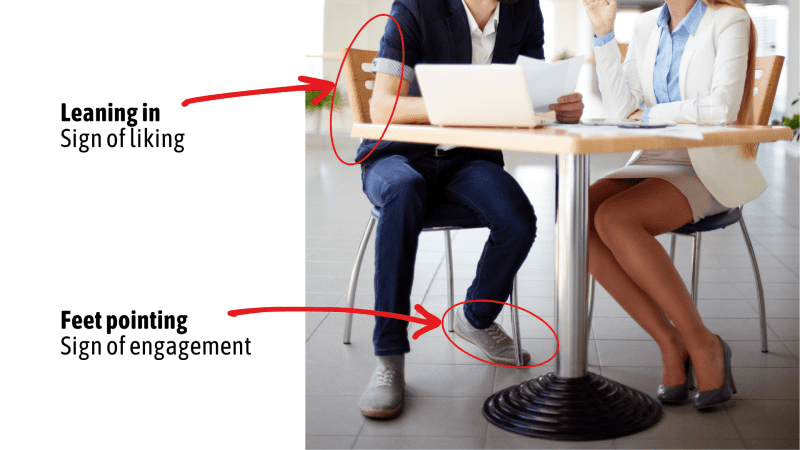
People’s feet and legs are the least deceptive parts of their body, often revealing true intentions because they are less consciously controlled. Common signs include: bouncing feet indicate joy, feet point towards what we like, and splaying out legs shows territoriality.
Our feet and legs often reveal more about our true intentions than other parts of our body because we are less likely to control what they are doing. From a young age, we learned to manage our words and facial expressions to convey a certain message, such as smiling out of politeness. But we rarely even notice what our feet are doing, and this makes them a reliable source of nonverbal cues.
One example of this is “happy feet,” where a person’s feet wiggle or bounce with joy. This can be seen in scenarios like lovers reuniting, a child excited about a trip to Disneyland, or a poker player with a great hand. However, it’s important to note that this behavior can also indicate nervousness or impatience, such as students fidgeting near the end of a class.
The direction in which our feet point is another telling sign. Our feet tend to turn towards things or people we like and away from those we dislike.
For instance, if you join a conversation and notice that two people only turn their waists towards you while their feet remain pointed away, it’s a sign they might prefer to be left alone. Similarly, if someone in a conversation starts turning one foot away, it indicates disengagement or a desire to leave, possibly because they don’t want to talk to you or have another appointment.
Legs can communicate a territorial display, such as when a person’s legs are spread far apart when standing, called “leg splaying.” Law enforcement officers often use leg splay to convey authority and control. Navarro sometimes has coached female officers to use this pose rather than standing with their feet together, which is a sign of submissiveness. A variation of this is the “Arms Akimbo” posture, where hands are placed on hips with elbows out in a v-shape.
Some signs convey high comfort, such as when we cross our legs while standing in someone’s presence. Another example is when two people’s legs and feet mirror each other’s positions, known as isopraxis, which indicates they feel in rapport or harmony.
If someone's feet are pointed away from you in a conversation, what does that indicate?
Interest
Comfort
Excitement
Disengagement
👮 5. Safety & Dominance: Our arms and torso send strong signals about when we feel defensive, dominant, or interested

Our arms and torso communicate strong messages. When threatened, our limbic brain protects vital organs with defensive behaviors like raising our shoulders (turtle effect). Feeling dominant makes us take up more space. Interest or liking makes us lean in and dislike makes us lean away.
Our bodies instinctively protect vital areas when threatened or challenged, driven by the limbic brain. This involves using our arms and torso as shields, similar to how people automatically raise their hands to defend against an attacker, resulting in arm wounds being know by law enforcement as defense wounds.
Some examples of defensive behaviors that signal someone feels threatened include: crossing arms, restricting arm movements, and raising shoulders towards ears (which the author labels The Turtle Effect). These kinds of behaviors also tend to signal insecurity or weakness. (Be careful, however, because some people simply enjoy crossing their arms, which is why it’s so important to make note of an individual’s baseline behavior when they feel comfortable.)
The direction of our torso can reveal our feelings towards people or things. We tend to lean towards what we like and find interesting and lean away from things we dislike. Picture two lovers at a cafe, leaning forward towards each other, indicating their affection. Conversely, if someone turns their body slightly away to the side, it often signifies discomfort or dislike.
Dominance and authority are also expressed through arm and torso movements. Taking up more space, such as spreading one’s arms out, draping an arm over a chair, or the hooding effect (where a person leans back and interlaces their hands behind their head during a meeting), these all signal relaxation and authority.
Which of the following is a defensive behavior signaling someone feels threatened?
Smiling slightly
Restricting arm movements
Nodding slowly
Making eye contact
🦸 6. Hands & Confidence: Hands can indicate openness, honesty, and confidence—or the opposite, deceit and discomfort

Hands are key indicators of a person’s emotional state and intentions. Signs of confidence include steepling of hands, thumbs pointing upwards, and thumbs sticking out of pockets. Signs of discomfort include nail biting, sweaty hands, hand-wringing, and thumbs in pockets. Universally offensive gestures include finger pointing and snapping fingers.
Our hands are incredibly expressive and can reveal a lot about our emotions and intentions. They play a significant role in communication, and we tend to pay a disproportionate amount of attention to them. In fact, when someone is speaking, but their hands are hidden under a table, it can feel uncomfortable, like they’re hiding something.
Understanding these hand signals can greatly enhance your ability to read people. Recognizing signs of confidence can help you appear more certain in what you’re saying, while spotting signs of discomfort can alert you to stress or deceit.
When it comes to displaying confidence, one of the most powerful gestures is steepling hands, where fingertips of both your hands are spread out and touching each other. This gesture shows certainty and is often used by confident speakers or witnesses in court. Another positive sign is the when thumbs are pointing upwards, which indicates positive thoughts. Having thumbs sticking out of pockets is a common display among high-status individuals, like former U.S. President JFK.
On the flip side, signs of stress and nervousness are also evident in hand movements. People who are lying or under stress tend to gesture less and have more restrained hand movements, as if they don’t want to draw attention to themselves. Hand wringing or rubbing one’s hands together is a clear pacifying behavior, used to self-soothe when someone is worried—it’s often seen in people testifying before Congress.
Offensive hand gestures include pointing your finger at people, which is often seen as rude and aggressive. Navarro says this escalates tensions, such as in prison settings where finger-pointing usually precedes fighting.
Navarro also says snapping your fingers at someone is one of the rudest things you can do; it makes people feel insignificant. Well, what’s the opposite of that? Probably remembering to use people’s names, which makes them feel important, a core human need.
The most-recommended book on people skills ever must be the classic “How to Win Friends and Influence People” by Dale Carnegie. In that book, the third major principle is “Remember that a person’s name is to that person the sweetest and most important sound in any language.” With plenty of examples from Presidents like Franklin D. Roosevelt to business magnates like Andrew Carnegie, who went out of their way to remember thousands of people’s first names.
Which of the following is a sign of confidence?
Crossing arms
Avoiding eye contact
Steepling of hands
Thumbs in pockets
👁️ 7. Eyes & Liking: Our eyes and facial expressions reveal the widest range of human emotions, including like and dislike
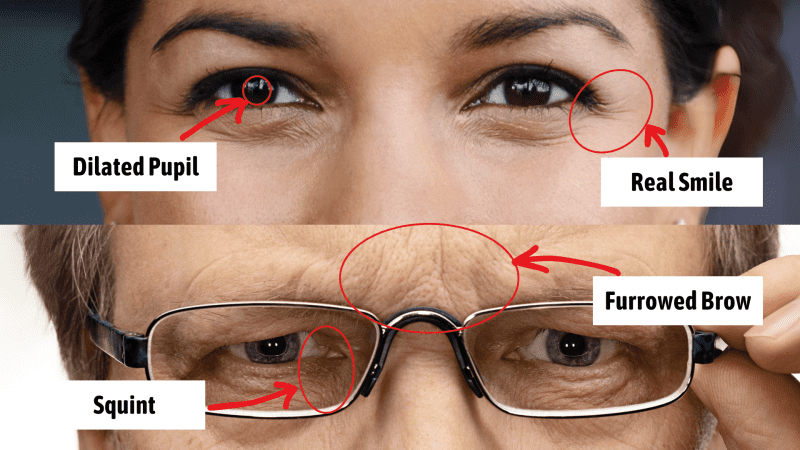
Positive emotions relax facial muscles, dilate (open) pupils, and makes us tilt our head. While negative emotions cause facial tension, pupil constriction, and compressed lips.
Our faces and eyes are powerful communicators of our emotions. The countless tiny muscles in our face can produce a wide range of expressions, revealing our true feelings even when we try to hide them.
For instance, negative emotions such as discomfort or fear often make us tense, leading to signs like a tightened jaw, squinting, and a furrowed brow. Picture the stern expression of Clint Eastwood in an old western.
A clear sign of being distressed is having compressed lips, when they become a thin line. Pursed lips indicate disagreement. Lip-licking is a pacifying behavior because stress can cause dry mouth.
On the other hand, positive emotions tend to relax our facial muscles. When we feel comfortable, we might tilt our head slightly, a gesture commonly seen in moments of courtship or affection.
Our eyes, in particular, give away a lot. Our pupils dilate (increase in size) when we like what we see in order to let more light in and constrict when we don’t. A quick eyebrow raise shows we are pleasantly surprised. Eye gazing can indicate love, curiosity, or even threat, depending on the context. Lovers and mothers often gaze into each other’s eyes, but predators do the same with their prey.
Eye-blocking behaviors can be particularly telling. For example, when someone’s eyes squint, it’s likely they’ve encountered something they don’t like. Similarly, closing the eyes for a few seconds or covering them with a hand upon hearing bad news is a common response to distressing information.
Blinking patterns can also reveal our emotional state. We tend to blink more frequently when we are aroused, troubled, or nervous, and blink less frequently when we are relaxed. If you notice someone blinking rapidly a few times after you’ve said something, it might be a sign that they are uncomfortable with what they just heard.
Lastly, the position of the chin can tell us a lot about someone’s confidence level. A chin held down suggests low confidence or adversity, while a chin held up indicates positive feelings and high confidence. It’s no wonder the phrase “keep your chin up” is associated with maintaining a positive attitude.
Which of the following is a sign of positive emotions?
Head tilt
Compressed lips
Pupil constriction
Facial tension
- Observe comfort: In conversations, quickly assess if the person seems at ease or stressed and adjust your approach accordingly.
- Identify reactions: Notice your own freeze, flight, or fight responses in stressful situations. Practice deep breathing or mindfulness to stay calm and grounded.
- Watch feet direction: Observe the direction of people’s feet during interactions to gauge their interest or discomfort. If they’re pointed away from you, the person may be disengaged.
- Use open posture: Keep your arms open and avoid crossing them to project confidence. Take up more space with your body to show authority when needed, using the arms akimbo stance and splayed legs.
- Practice confident gestures: Use hand gestures like steepling fingers or open palms. Avoid hiding your thumbs in your pockets or rubbing your hands together.
- Look for facial tension: During a negotiation, look out for facial tension in response to specific sections of the deal, which can indicate they don’t like that part of it. Signs include eye squinting, pursed lips, rapid blinking, etc.

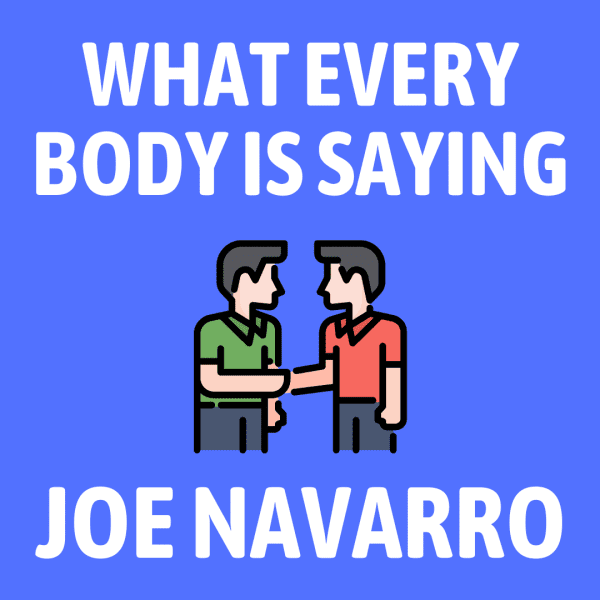











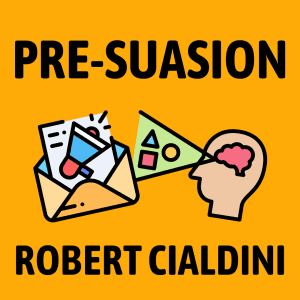

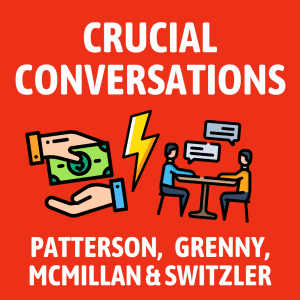


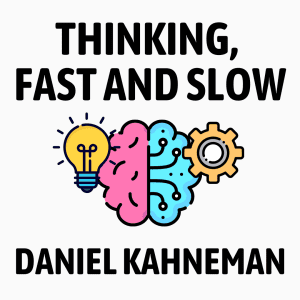








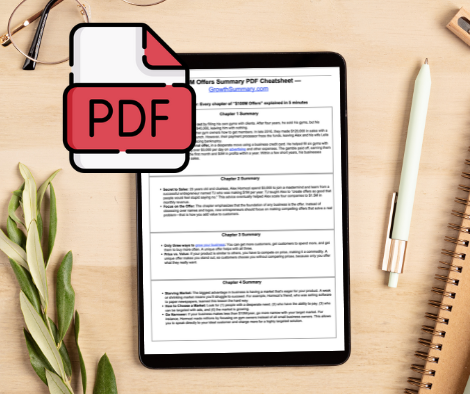
Community Notes